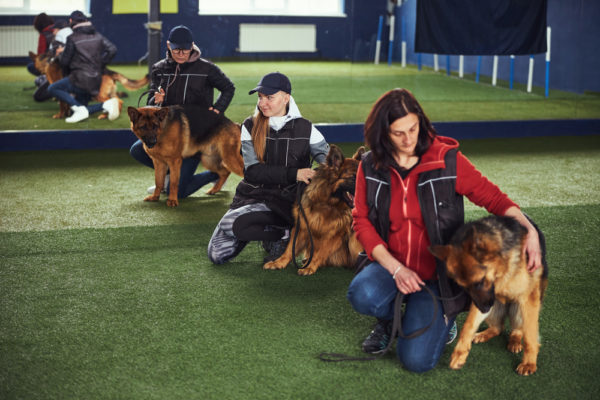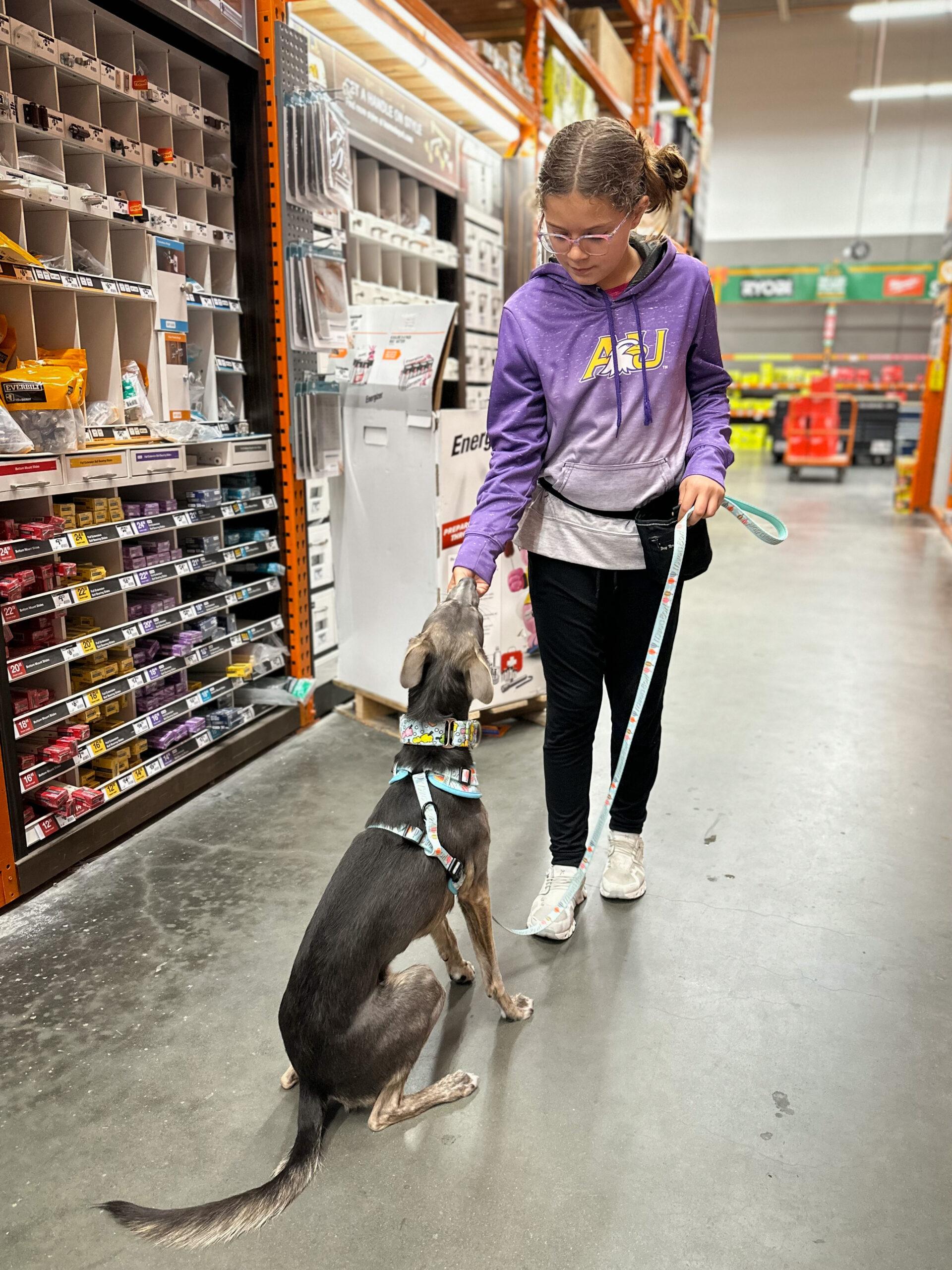Dog Training Rochester NY: Tailored Solutions for Every Dog's Needs
Dog Training Rochester NY: Tailored Solutions for Every Dog's Needs
Blog Article
Transform Your Dog's Behavior With Proven Training Techniques
Changing your pet's behavior calls for a nuanced understanding of their private traits and requirements, as well as the application of tried and tested training methods. Consistency in your training method not just enhances obedience but likewise promotes a much deeper bond of trust and respect between you and your family pet.

Recognizing Pet Habits
Understanding dog habits is crucial for efficient training and interaction in between people and their canine friends. Pet dogs, as social pets, exhibit an array of behaviors affected by genes, environment, and experiences. Recognizing these actions helps owners tailor their training approaches to meet the particular needs of their dogs.
Key aspects of dog behavior include body language, articulations, and social communications. Additionally, socialization plays an essential function in shaping actions; canines that communicate favorably with various individuals and other animals are usually a lot more versatile and well-adjusted.
Furthermore, acknowledging stress signals-- such as evasion, panting, or pacing behaviors-- can protect against rise right into much more major issues. Proprietors who are in harmony with their pet's habits can create a caring and risk-free atmosphere, promoting count on and boosting the training procedure. Eventually, a deep understanding of canine actions lays the structure for a harmonious partnership and efficient training end results, making sure both canines and their proprietors thrive together.
Favorable Reinforcement Methods
Favorable reinforcement strategies are widely acknowledged as one of one of the most reliable techniques for training pets, promoting a positive discovering setting. This approach includes fulfilling wanted habits with treats, appreciation, or play, thereby motivating the pet dog to repeat those behaviors (Dog training). Unlike revengeful approaches, favorable reinforcement constructs depend on and enhances the bond in between the pet dog and the trainer
Incentives should be given right away complying with the wanted actions to help the pet dog make the connection. Uniformity is additionally vital; utilizing the exact same commands and incentives assists the pet dog comprehend what is expected.
It is important to keep in mind that positive reinforcement is not about bribery; instead, it is regarding reinforcing great habits. With time, as the dog learns to associate certain activities with positive outcomes, the regularity of benefits can be progressively lowered, transitioning to verbal praise or intermittent incentives. This approach not just encourages obedience yet also advertises a confident and pleased pet dog, making training a more delightful experience for both celebrations entailed.
Addressing Typical Problems
Addressing typical concerns throughout pet dog training is vital for guaranteeing a successful and harmonious connection in between the dog and its proprietor. Numerous pet dog proprietors run into behavioral obstacles, such as too much barking, leaping, and chain pulling. Recognizing the origin causes of these habits is important for efficient training.
To reduce this, supply adequate physical exercise, psychological excitement, and possibilities for social communication with both humans and other pets. Training the pet to rest upon welcoming can redirect this behavior positively.
Chain pulling is one more widespread issue, frequently arising from a pet dog's passion to discover. Using correct chain dealing with strategies, integrated with training protocols that encourage loose-leash walking, can substantially boost this behavior.
On top of that, problems like source guarding or separation stress and anxiety require tailored approaches. Gradual desensitization and counter-conditioning can be efficient in addressing these challenges. By acknowledging and proactively taking care of these common problems, canine proprietors can foster an extra delightful training experience and reinforce the bond with their canine companions.
Uniformity in Training
Uniformity is a foundation of effective dog training, as it develops a clear framework for the dog to comprehend expectations and habits. When signs, incentives, and commands are applied evenly, pets can much more conveniently understand what is needed of them. Irregular training can result in confusion, causing unfavorable habits that frustrate both the instructor and the pet.
To accomplish uniformity, it is important that all participants of the family abide by the exact same training approaches. Making use of the very same spoken cues and hand signals ensures that the pet dog obtains consistent messages. Additionally, the timing of modifications and incentives need to be regular; instant reinforcement raises the likelihood that the pet dog will certainly associate the behavior with the outcome.
In addition, establishing a regimen can further improve uniformity. Normal practice, coupled with organized schedules for feeding, strolling, and play, help pets prepare for and comprehend their setting, making them more responsive to training. Eventually, uniformity fosters a feeling of safety and count on, equipping pet dogs for more information effectively. By committing to an organized technique, instructors can promote positive actions adjustments and cultivate a courteous companion.
Building a Strong Bond
Exactly how can fostering a solid bond between a pet dog and its proprietor boost the training experience? A strong relationship improved trust fund and respect offers as the structure for efficient training. When a pet dog really feels secure in its link with its proprietor, it is more probable to show positive behaviors and be responsive to finding out. This bond motivates the dog to engage completely in training sessions, as it watches the proprietor as a resource of assistance and support.

In addition, a reputable connection can lower stress and anxiety and behavior issues, as dogs are much less most likely to act out when they feel understood and looked after. Prioritizing the growth of a strong bond not only enhances the training experience yet additionally adds to a happier and a lot more well-adjusted dog. Inevitably, the journey of training transforms right into a collective partnership, leading to lasting behavioral improvements.
Final Thought

Owners that are attuned to their pet's behavior can develop a safe and nurturing atmosphere, cultivating count on and enhancing the training procedure. Ultimately, a deep understanding of canine habits lays the foundation for an unified connection and reliable training results, making sure both pets and their proprietors flourish with each other.
Addressing typical problems during pet dog training is essential for making sure a successful and unified relationship between the pet and its owner (Dog training).Uniformity is a foundation of effective pet training, as it establishes a clear structure for the these details canine to comprehend expectations and actions.In final thought, changing a dog's actions with verified training methods needs an understanding of check it out canine actions, the application of positive reinforcement techniques, and a focus on consistency
Report this page